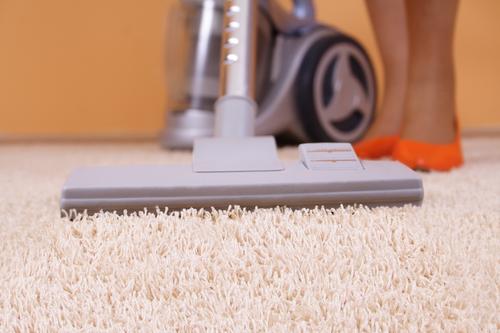Care and Maintenance of Antique Rugs and Carpets
- March 11, 2015 07:58

Click Here For More Information About Rug Cleaning in NYC
A Guide to Care and Maintenance of Your Investment Quality Rugs
Care and Maintenance of Antique Rugs - Owning an antique rug, especially a fine antique one, is not only a pleasure, but a responsibility. Owners of antique carpets and Persian rugs should actually think of themselves as "the current owner", one in a series extending from the past and into the future. Antique rug care and maintenance is perhaps the most important and simplest aspect of owning a rug. Maintaining it is vital to protecting the condition and, as a result, the value of the piece as well. Basics of rug maintenance are also covered in our Guide to Everything You Want to Know About Antique Rugs.
To enjoy a fine rug over the long term, it is important to follow these simple precautions:
Rugs are mainly susceptible to the following:
- Wear - due to to foot traffic and / or rough vacuuming.
- Damage - due to moths and other insects
- Stains - from food or beverages.
- Burns - from smoking or fireplaces.
- Damage leaks from plumbing / potted plants.
Why such carpet damages, if left unattended, will eventually become a major problem:
You must be vigilant of a carpet if it begins to unravel or wears down to foundation, as it would most likely continue to deteriorate further into an actual hole, tear, or gap.
Any such losses to the fabric - holes and torn edges – must be repaired as soon as possible to prevent them from getting larger and then requiring more extensive repair.
If a you have a leaky flower pot sitting on-top of a rug the water will seep into the rug and over time, the will develop dry-rot. Once the foundation of the rug has rot, there is no way of fixing it - that area would need to be completely rewoven and the foundation recreated.
Damages due to leaks can affect the entire rug. If a rug "sits" in water for a period of time, the colors will begin to run and is at risk of developing dry rot throughout. the rug does not need to fully submerged for this to happen. Since the wool will absorb the water, it will need to opened and dried fully before you will know if the carpet suffered any significant or long term damage.
How to minimize the risks of damaging to your rug:
- Watch-out for moths - If you see a moth flying around then you should realize that there is a good chance that your rug is already infested and you should probably seek professional help. Check the underside of your rug periodically to look for evidence of moths, especially the white silky cobwebs of the larvae. Some residences tend to have moths. If you fall into this category use moth spray periodically, even on the reverse side of rugs in active use.
- Storing your rugs - If you store rugs folded or rolled, use moth balls or cedar shavings, and check the rugs every month or two. make sure to have the fully wrapped in and sealed so that water and humidity wont enter. It might be wise to not have the rug sitting directly on the floor of your storage facility. If a leak does occur, it might be days before you find out and you surly would not want your rug "sitting" in water for the entire time.
- Burns - make sure to have something placed under a candle or incense. This way the hot wax and ash wont fall directly onto the carpet's surface.
- Flower Pots - Make sure you have something under the flower pot where the water could pool. As long as the area (of the rug) where the flower pot is located remains dry, you will not create any issues.
- If you have a good piece then regular stains from food and beverages will most likely not cause long term damage. Therefore you should feel free to use and enjoy the piece and worry if your guests spill red wine or food.
How to keep your rug clean and well preserved:
Rugs will be come dirty over time. This is a fact - no matter how careful the owner. The accumulation of dust and dirt may contribute to wear and / or damages.
Here are a few things you could do to keep your rug clean and healthy over time:
- Washing and cleaning your rug - As a routine maintenance, every four years or so, a rug should be professionally washed and cleaned . Urban environments will deposit airborne grime and soot in your rugs and textiles. Rugs can also dry out from central heating and washing not only cleans the rug but re-moisturizes the wool.
- Spot cleaning - This may be necessary in the case of stains from spills. NEVER use chemical cleaners or stain removers. If not used or applied correctly, they may damage the rug irreversibly. Red wine, tea, coffee, milk, and pet stains should require immediate attention. Such spills should be blotted up and then flushed with warm water. This can be done by putting a disposable towel or cloth under the rug and pouring water through it until the stain is rinsed out. Test the rug first to make sure that the colors do not run before flushing extensively with water. To "test" the area, simply rub a damp white cloth over the the effected area and then see if any of the colors transferred over to the white cloth. If so, then we would strongly urge you to seek professional assistance.
- Red wine spills can also be treated by putting table salt on the stain after blotting and flushing, but the salt should be removed after five minutes or it will bleach the rug.
- If you soak an area on the rug -As a result of a leak, spill or if done on purpose, a damp rug should never be left on the floor. Make sure to lift it from the floor's surface to allow air circulation on both sides until it is thoroughly dry. You don't need to lift the entire rug off the floor, by putting things under different areas of the carpet, you will allow the air to circulate and the moisture to evaporate. A damp rug left on the floor may lead to dry rot. Major washing and even spot cleaning are best left to professionals. A professional cleaning service can do wonders getting out stains, especially if one has the rug attended to quickly.
Keeping The Damage from Foot Traffic To a minimum:
Even the finest rug will wear down if subjected to repeated traffic.
Follow these simple steps to protect the longevity of your rug:
- Rotate the rug - It is important to rotate the rug every two years or so that traffic is spread evenly over the piece.
- Vacuum your carpet - Frequent vacuuming is essential to remove dust and grit which will wear the pile down under foot traffic. But it should be ordinary suction vacuuming.
Keep the colors in your rug from fading:
Contrary to popular opinion, vegetable dyes may fade substantially when exposed to UV light. The synthetic dyes will fade extensively and this will happen far quicker than with the vegetable dyed rugs. Prolonged, intense sunlight is not good for textiles of any type. Intense light might also dry and oxidize the wool, weakening the fibers. This is true of vintage rugs and antique rugs.
Follow these steps to keep the colors in your rug looking great:
- Shade the rug - If you have rugs in a very sunny room with southern exposure, it is advisable to use shading, not to block the light, but to reduce it somewhat.
- UV films - Applying UV Filters to your windows is strongly advised. You will not see a difference and it is quick, easy, inexpensive to implement.
Thing your should avoid doing to ensure your rug will have a long and happy life:
- Do not store rugs in a closet or attic without checking every month or so for moths.
- Do not store rugs in a basement, which could lead to irreparable dry rot (due the humidity that is always present in such places).
- Do not leave a rug that is damp or wet directly on the floor surface. Moisture that cannot escape from under the rug may also cause dry rot - make sure to prop the rug up, letting the air circulate.
- Do not use vacuum cleaners with brush roller bars, unless the roller feature can be turned off. Roller or beater bars can cause the ends and sides of the rug to fray, leading to extensive loss or damage to the pile.
- Do not attempt to treat stains with chemical cleaners. These may make things worse and prevent a professional cleaner from removing the stain later on.





















